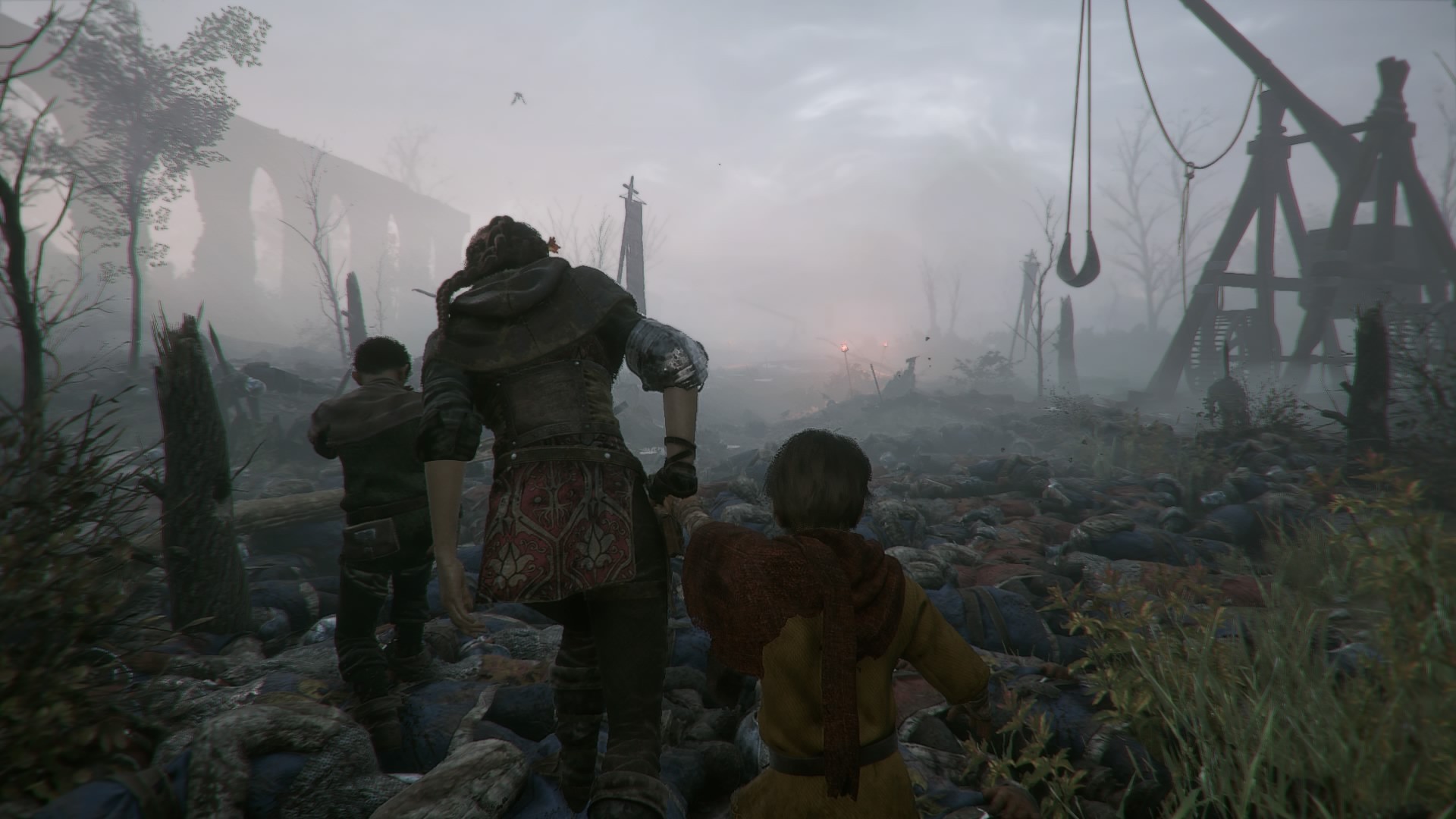A Plague Tale: Innocence Review
C’est magnifique.

Let me set the scene for A Plague Tale: Innocence by saying that it neatly ticks three out of the four boxes for an apocalypse: pestilence, war and death. Make no mistake, this story set in France during the Hundred Years’ War and the Black Death is a bleak affair.
You play Amicia, fighting to survive and protect your younger brother, Hugo, after your family home is raided. A ruthless religious cult called The Inquisition is after you. Rats swarm the landscape in droves. All around is death and decay, from the battlefields of fallen French and English soldiers to buboe-encrusted plague sufferers and rat-gnarled corpses.

In light of all this darkness and misery, then, it’s surprising that A Plague Tale is an absolute delight to play. This tale of courage and triumph over adversity is utterly absorbing, and more enjoyable than it has any right to be.
As if the Black Death wasn’t bad enough in real life, A Plague Tale ups the ante by turning rats into crazed man-eaters. Their only weakness is light: carry a torch or cower under a standing lantern and you’re safe, but the moment you step into shadow they’ll rush to devour you with startling ferocity. A good portion of the game, then, necessitates igniting braziers and directing torches to light a safe path through.

Amicia is equipped with a sling – an unorthodox main weapon for a protagonist, perhaps, but it works great here. You have to keep enemies at a distance, as you’re relatively powerless up-close and die from one hit. You begin with humble rocks but learn to craft a varied arsenal, including incendiary ammo and irritant gas that forces guards to remove their helmets, exposing their heads. The sling has multiple ancillary uses, too, from lighting torches to triggering traps and creating distractions.
That said, avoiding enemies altogether is often the best strategy. Through skulking around and avoiding bloodthirsty rats whilst protecting your brother, A Plague Tale combines two infamously dubious activities: stealth sections and escort missions. Miraculously, the result is anything but frustrating.

The key is in how forgiving it is. Enemies have a narrow line of sight, a second or two of reaction time and eyesight so bad they can’t pick you out from amongst long grass, even in broad daylight. Levels are straightforwardly designed with generous checkpoints, and puzzles are light and breezy.
From the monolithic influences of that game that sounds a bit like ‘shark goals,’ there’s been a glorification of difficulty in recent years. Rogue-likes, Souls-likes, scoffing at developers daring to include an easy mode – it’s all gotten a little wearying and elitist. A Plague Tale feels like a breath of fresh air.

Don’t get me wrong, it’s still a darn sight more challenging than a walking simulator. There’s a satisfying and impeccably balanced tease of adversity throughout. But it’s the narrative and atmosphere that take centre stage, and the game is all the better for it. It makes you feel like you’re going through hell without actually putting you through it.
Sometimes it could stand to respect your intelligence a little better, however. “Maybe I should move that box in order to reach the high ledge,” Amicia will muse out loud, just seconds after entering a room. The box is big enough that even the visually-impaired guards could spot it a mile off. It even has handles that glisten with that modern video game sheen that says, “Hey, look at me! I’m a thing you should pay attention to!”.

But this is a minor misstep in its bid for accessibility. Despite taking a little time to pick up steam, later chapters test your mettle a little more and the overall pacing is excellent. Shifting between you vs humans to you vs the rats and you vs the environment – and sometimes a mixture of all three – it keeps evolving and mixing up the experience with new mechanics and surprises throughout its fairly lengthy 16 chapters.
Another strength of A Plague Tale is its memorable world, crafted with both technical and artistic flair. The claustrophobic alleys of plague-stricken medieval towns. A battleground engulfed with the carcasses of the slain. The stunning architecture of cathedrals, châteaus and Roman ruins. These settings range from somber to downright grisly, but they manage to depict a macabre beauty.

There are moments of tranquility amongst the terror, too. Amicia makes the most of their inopportune road trip to teach Hugo about the world. When Hugo finds a patch of flowers, he’ll pick one to place in Amicia’s hair. And the pair meet new friends on their journey, and discover much needed, if short-lived, places of refuge from the horrors of their situation.
A Plague Tale: Innocence left me awestruck. This gothic adventure seemingly came out of nowhere and eviscerated my expectations like rats on flesh. I loved its refreshing approach to difficulty, and the story made me truly care about its characters – and I don’t even like children. Looking for another grim story of survival to tide you over until The Last of Us 2? Lack of zombies aside, A Plague Tale: Innocence is it.
[Reviewed on PS4]
